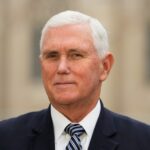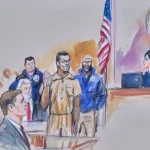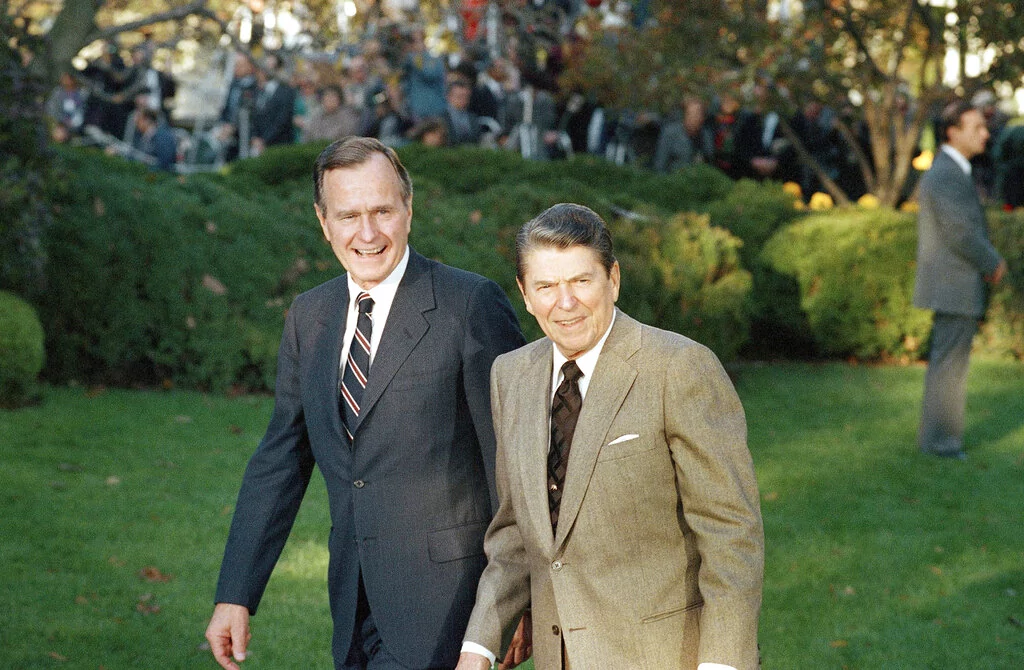
The peaceful transfer of power is the hallmark of American democracy.
There has remained only one constant in the 247 years of the American republic. No matter the personal animus or alleged fraud, there has always ultimately been a peaceful transfer of power in the nation’s highest office. But that doesn’t mean there haven’t been some tense, chaotic, and even some flashing touches of humanity in the process.
Here is a look at a few of the most memorable moments in U.S. history between incumbent presidents and their successors.
‘Dear George’ launches a new era in the Oval Office
Transfers of power can be tense affairs, but even those in the highest echelons of power appreciate a touch of humanity. As President Ronald Reagan finished his second term in 1989, he left behind just that. On the brink of the 1990s, a decade that would usher in the age of the internet and the fall of the Soviet empire, Reagan left his successor in the Oval Office a handwritten note and launched a tradition that would last for decades.
George H.W. Bush, Reagan’s vice president throughout “the Gipper’s” two terms in office before climbing to the presidency himself, was the lucky recipient of the letter.

“Dear George,” Reagan began writing to his vice president on a pad illustrated with a cartoon featuring a collection of turkeys scaling a prone elephant, the symbol of the Republican Party. “You’ll have moments when you want to use this particular stationery,” the 40th president continued. “Well, go to it. George, I treasure the memories we share and wish you all the very best. You’ll be in my prayers. God bless you & Barbara. I’ll miss our Thursday lunches. Ron.”
Following Reagan’s letter, four presidents would continue the personal gesture of leaving behind a note of Godspeed in the nation’s most coveted office. George H.W. Bush, Bill Clinton, George W. Bush, and Barack Obama continued the practice that transcended party lines.
“Congratulations on a remarkable run,” Obama wrote Donald Trump on the day of his successor’s inauguration in the spring of 2017. “Millions have placed their hopes in you, and all of us, regardless of party, should hope for expanded prosperity and security during your tenure.”
The ‘stolen’ election: the 2020 transfer of power
When Trump passed the reigns of power to Joe Biden four years later, Reagan’s cordial tradition ended.
Trump repeatedly alleged Biden stole the 2020 election from him. Although courts have repeatedly tossed out lawsuits claiming election fraud, as he makes another bid for the White House, Trump made the 2020 election a talking point with his base. These days, he can be found rallying his supporters around the chant “too big to rig.”
Trump’s anger at the official tally made for an uncomfortable transfer of power in the early spring of 2021. The outgoing 45th president refused to attend his successor’s inauguration.
Trump’s refusal to attend Biden’s inauguration wasn’t the first time a loser in their quest for the Oval Office had declined to appear at their opponent’s political coronation.
Andrew Johnson refused to attend the inauguration of Ulysses S. Grant in 1869, and even earlier, the nation’s founding fathers couldn’t bring themselves to attend their foes’ inaugural.
Adams and Jefferson, from political rivals to old friends
In 1800, the country watched as Thomas Jefferson and John Adams sparked drama. It was the turn of a new century, and also an era of new beginnings. As the nation marched into the 17th century, it was also the first time the leader of one political party, Adams handed the reigns to his political opponent.
The two shared a bitter animosity, and tensions were high as Americans waited to see if a peaceful transfer of power was possible. A member of the Federalist Party, Adams was an ally of Treasury Secretary Alexander Hamilton. Jefferson, the Secretary of State who had helped James Madison form the Democratic-Republican Party, was a staunch critic of the federalist’s push for a new national banking system. The two also clashed over foreign policy. Adams wanted to align the young Republic with Great Britain, while Jefferson favored a confederacy with France.
Jefferson and Adams received the same number of electoral votes, and their tie sent the decision to the House of Representatives, where Jefferson clinched the presidency on the 36th ballot.
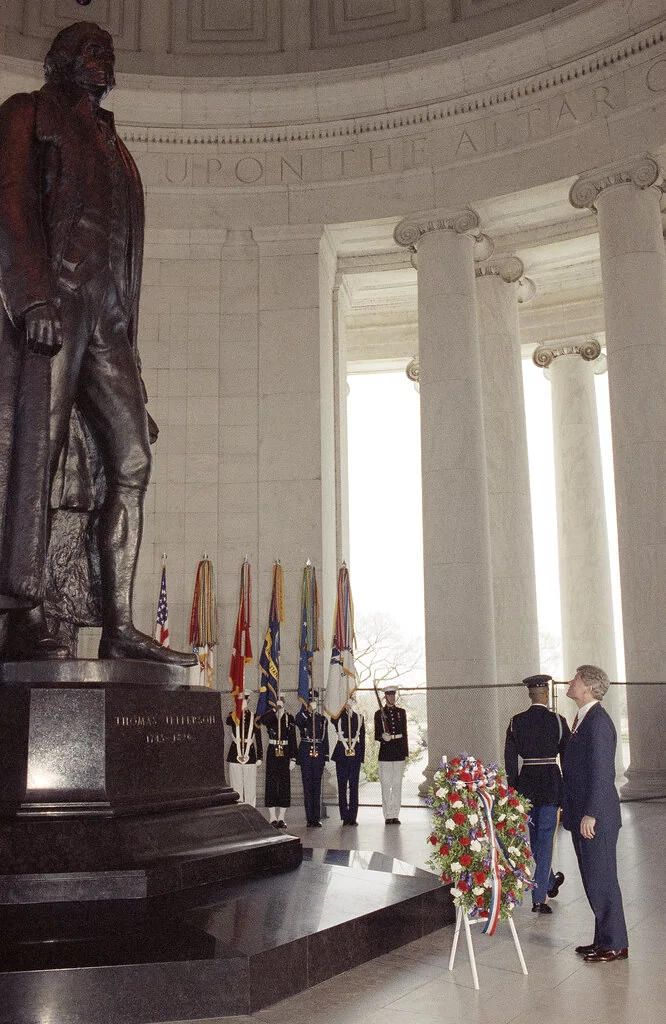
Adams couldn’t bring himself to attend his rival’s inauguration, but a first-hand account from an observer of the transfer of power captured the second president’s historic concession of loss.
“Let me congratulate not only you, but all my fellow citizens on an event which will have so auspicious an influence on their political welfare,” Margaret Bayard Smith wrote to her sister on that 1801 Inauguration Day. “I have this morning witnessed one of the most interesting scenes a free people can ever witness. The changes of administration, which in every government and in every age have most generally been epochs of confusion, villainy, and bloodshed, in this our happy country takes place without any species of distraction or disorder.”
There was a happy ending even beyond the peaceful transfer of power. The two’s bitter rivalry eventually blossomed into a steady friendship in their later years. For over a decade, until Jefferson’s death, the two developed a robust correspondence. In his last letter to Adams, shortly before his death in 1826, Jefferson wrote fondly of his “ friendship and respect” for the federalist.
A New Deal or no deal? Hoover plays FDR
Known for presiding over the infamous stock market crash of 1928 that catapulted the U.S. into a deep depression, Herbert Hoover is often remembered for his inability, or unwillingness, to put the economy back on track. The Republican incumbent would lose the 1932 election to Democratic Franklin Delano Roosevelt, in large part, because of FDR’s “New Deal” that pledged to put Americans back to work.
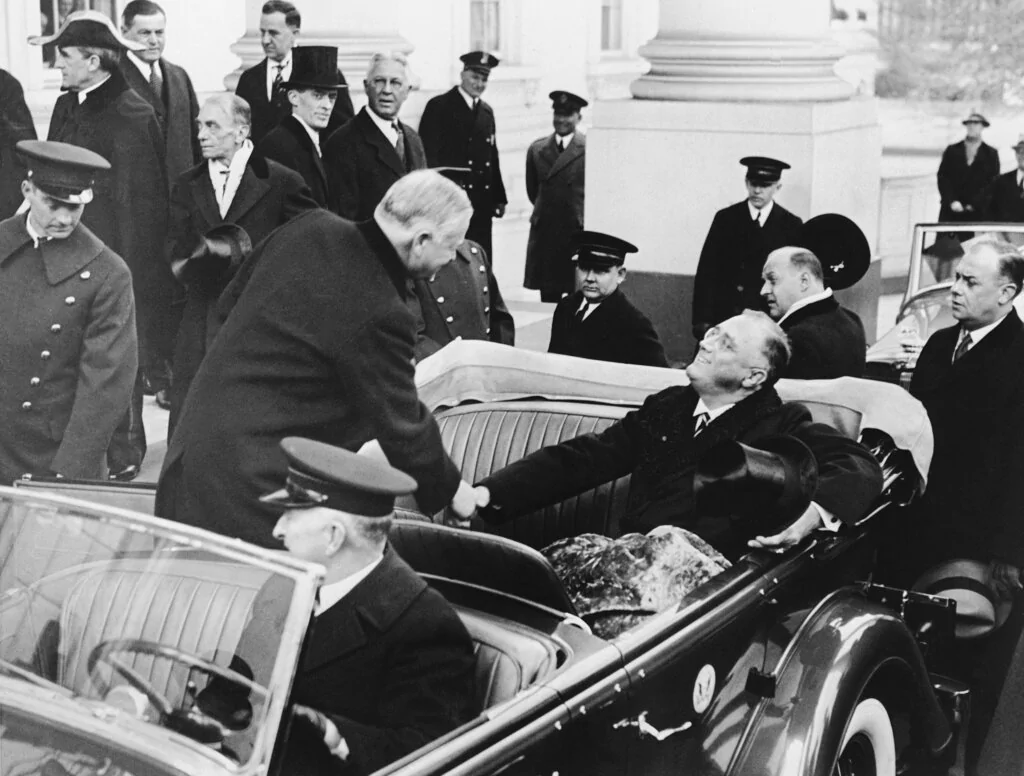
What isn’t as often remembered is the transfer of power between the two, when Hoover attempted to convince his successor to emplace measures that would have effectively scrapped his left-leaning economic recovery plan. In a series of later publicized telegrams and a letter, Hoover tried to persuade FDR to stand by the gold standard and a balanced budget among other agenda items.
The two corresponded between November, when Hoover lost the election, and March 1933, when FDR was inaugurated. Unmoved by his Republican opponent’s economic notions, the Democratic president-elect ascended to the Oval Office in the last inauguration that would be held in March. There is no telling how different the American landscape would look, both politically and physically had FDR agreed to water down his progressive policies in favor of Hoover’s economic plan.
The New Deal launched programs such as the Social Security Act that millions of Americans rely on today, and the Food Stamp Plan, created in 1939, which served as the genesis of the modern welfare state. Quite literally, the New Deal built the nation, with monuments, bridges, and roads from the Conservation Corps and Works Progress Administration programs scattered across the country.
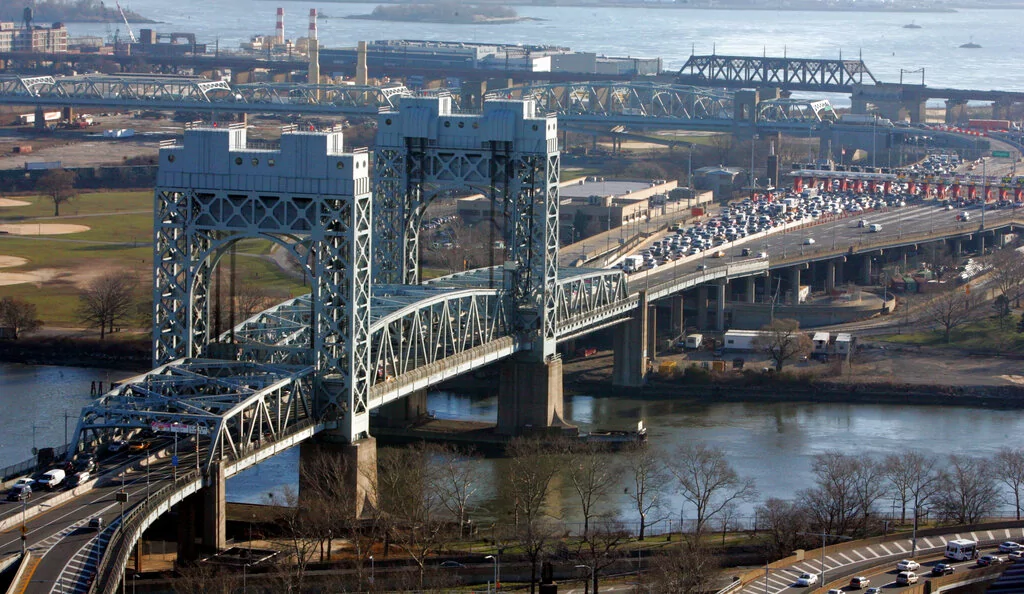
From the House to the Oval Office: Ford steps into power
If Americans who came of age in the 20th century were familiar with the concrete footprint of the New Deal in their small towns and big cities, another image is likely seared into their memories. Half a century ago, President Richard Nixon ironically flashed the V sign during the most crushing defeat of his political career. His presidency was doomed by the scandal of the notorious Watergate affair, Nixon resigned from office, making way for Vice President Gerald Ford to lead the nation during a chaotic and unprecedented 72-hour transfer of power.
Just under a year before Nixon was forced to leave the presidency in disgrace, Vice President Spiro Agnew offered his own resignation in the wake of tax fraud and bribery allegations. Ford, who was the House minority leader, filled Agnew’s spot in December 1973.
A mere eight months later, Ford became the first, and so far the only, person to become president without winning a general election for president or vice president.
Unbeknownst even to Ford, his closest friend had begun planning for a smooth transfer of power months before Nixon’s unprecedented resignation

In May of 1974, Philip W. Buchen began gathering plans for an orderly transition in the event that Nixon stepped down from the nation’s highest office, unsettled by the House Judiciary Committee’s formal impeachment hearings for the president.
CLICK HERE TO READ MORE FROM THE WASHINGTON EXAMINER
On the morning of August 8, Buchen’s worst fears were realized, and his preparations were validated when Nixon called Ford to tell him he was resigning. That evening, the president gave his final address from the Oval Office, informing the nation of his decision. The next day, the embattled Republican submitted his letter of resignation to Secretary of State Henry Kissinger and flew home to California.
“My fellow Americans, our long national nightmare is over,” Ford proclaimed on a hot August day in 1974.

